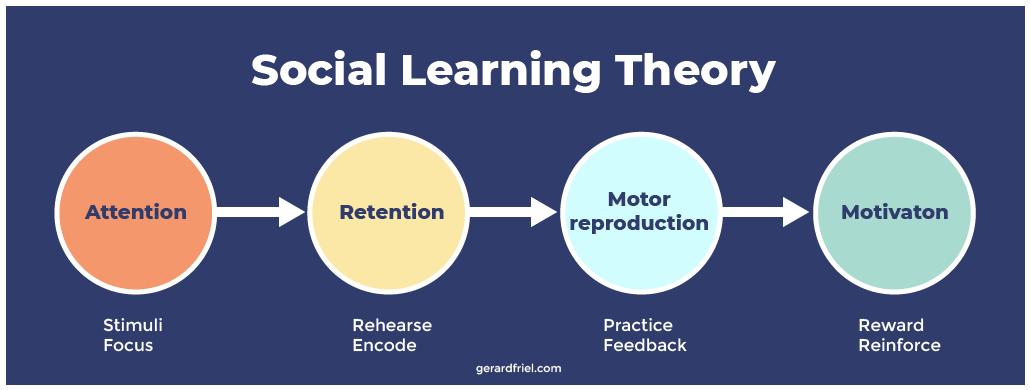Bandura’s Social Learning Theory
Mar 23, 2023

This essay discusses Bandura's Social Learning Theory, which outlines the process of how people learn behavior through observation. The theory posits that observational learning can occur when an observer sees another person being rewarded or punished for a particular behavior. This is known as vicarious reinforcement.
The primary components of Bandura’s Social Learning Theory are Attention, Retention and Motivation. Attention refers to the steps necessary for an individual to pay attention to a certain behavior in order to be able to observe it. Retention involves remembering what has been seen and learned from observing the behavior so that it can then be applied to other situations. Finally, motivation means having the desire or intention to imitate or repeat the observed behavior in order for reinforcement from either external sources (e.g., praise or rewards) or internal sources (e.g., personal satisfaction).
The Social Learning Theory also takes into account the role of self-efficacy in learning behavior. Self-efficacy is a person's belief in their own capability to complete a task successfully, which can be affected by observing similar behaviors being rewarded or punished. A person with a high sense of self-efficacy will have more confidence in their ability to perform tasks and thus may be more likely to take risks and pursue new activities, whereas someone with low levels may be less confident and thus more reluctant to try new things.
There are many applications of Bandura’s Social Learning Theory, from educational settings to marketing campaigns. For example, in a classroom setting, teachers can use the theory to help encourage students’ behavior by providing positive reinforcement when good behavior is observed. In marketing campaigns, advertisers can also use vicarious reinforcement to influence people's behavior and motivate them to purchase a certain product.
In conclusion, Bandura's Social Learning Theory is an influential model for learning behaviors through observation. It highlights the importance of attention, retention and motivation in observing behaviors as well as account for self-efficacy levels in order to effectively apply the learned behaviors into other situations. Furthermore, it can be used in various contexts such as classrooms and advertising campaigns to further understanding of how people learn behaviors.
